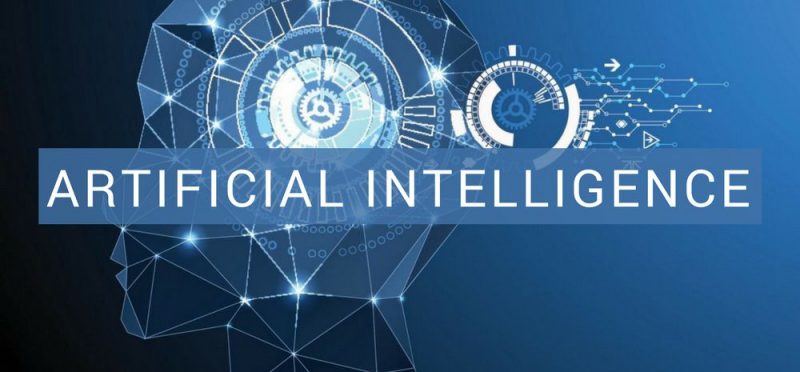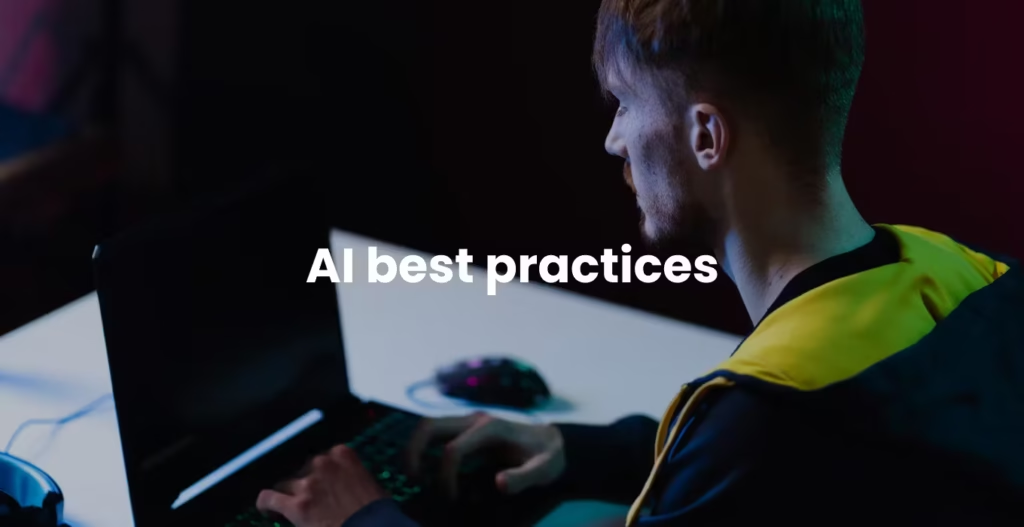In the past few months, there’s been a noticeable shift in classrooms and learning platforms across the world. More and more schools are turning to AI‑driven tools that personalise learning for students, and it’s genuinely changing the game. Gone are the days when every student had to learn at the same pace or in the same way. With these new AI-driven tools, students can now get support that fits their unique needs — whether it’s a smart tutoring bot that patiently explains a tricky concept again or a dashboard that shows teachers exactly where a student is struggling.
It’s not just about technology for the sake of it. These tools are actually making learning more engaging, more effective, and more personal. Teachers are using AI insights to adapt lessons, while students feel more seen and supported. In a sense, we’re watching education become less one-size-fits-all and more about helping each learner thrive in their own way.
What Does “AI‑Driven Personalised Learning Tools” Mean?
Imagine an educational system where every lesson adapts to your child’s learning pace, strengths, and interests. Instead of “one-size-fits-all” teaching, AI‑powered platforms analyse student performance in real time. They identify gaps, adjust difficulty, and recommend targeted resources, creating a truly tailored learning journey.
- AI algorithms detect patterns: which subjects a student struggles with, how fast they learn, and which teaching styles they respond to best.
- Adaptive lessons show up when needed: more practice for tricky topics, less for mastered ones.
- Instant feedback nudges learning forward with clear explanations and support.
Schools and Startups Leading the Charge

1. Alice.Tech – The “Duolingo for Exams”
Meet Alice.Tech, a Copenhagen-based edtech startup that recently secured $4.8 million in funding. Positioning itself as the “Duolingo for exams,” Alice.Tech uses AI to turn generic course materials into personalised study plans, flashcards, quizzes, and tailored learning strategies.
How it works:
- Students upload their textbooks or materials.
- The AI creates bite-sized explainers, practice quizzes, and flashcards.
- An adaptive plan responds to strengths and weaknesses, shifting focus as the student progresses.
- A freemium model gives free basic access, with premium upgrades and institutional partnerships available.
This model shows how AI‑driven personalised learning tools can bridge the gap between traditional teaching and individual student needs.
2. Khanmigo – AI Tutor from Khan Academy
Khan Academy, a household name in free online learning, launched Khanmigo—an AI-powered digital tutor based on GPT‑4. Available now via subscription, Khanmigo offers:
- Step-by-step support in subjects like math, science, coding, and English.
- Essay-writing assistance, with guidance on structure, grammar, and clarity.
- Virtual teaching support through “Khanmigo for Teachers,” helping educators create dynamic lessons and monitor student progress.
- A vision, as described by CEO Sal Khan: having “five amazing graduate students” per class to assist teachers, not replace them.
By balancing AI support with human oversight, Khanmigo aims to improve personalised learning while keeping educators in control.
3. Squirrel AI Learning – Adaptive Learning at Scale
Squirrel AI Learning, headquartered in China, offers a large-scale Adaptive Learning System (IALS) that breaks down subjects into fine-grained knowledge points. Students take a diagnostic test, and the system:
- Pinpoints specific knowledge gaps (e.g., a single math concept).
- Delivers targeted lessons, exercises, and examples.
- Adjusts next steps based on performance.
With over a million users and thousands of learning centres worldwide, Squirrel AI represents a mature, effective model of AI‑driven personalised learning tools for students.
4. Specialised Tools: QANDA, Ello, Iris & More
- QANDA: A South Korean learning app that uses AI to solve math problems via photo uploads, then provides explanations and study aids. Its MathGPT model scored top on math benchmarks.
- Ello: An AI reading tutor focused on early education. It listens to student speech, gives feedback, and supports over 700 decodable books, making it a top-rated ethical AI tool.
- Iris: A virtual coding tutor integrated into CS platforms, giving hints and guiding problem-solving without giving away exact answers, helping students build confidence.
Each tool shows how AI‑driven personalised learning tools for students work across ages and subjects.
Why This Matters Now: Teacher Support & Student Engagement
- Alleviating teacher burnout: AI-driven tools like Khanmigo and classroom assistants help, especially amid teacher shortages. Sal Khan compares them to having multiple TAs per class.
- Boosting student motivation: Personalised recommendations and adaptive learning paths encourage better focus and engagement
- Saving time on admin: AI handles grading, scheduling, and reporting, freeing teachers to connect with students.
- Supporting students with disabilities: AI tools such as audio-based platforms make learning more accessible and inclusive.
Challenges & Cautions

While promising, AI‑driven learning tools come with concerns that educators and parents should address:
- Impact on critical thinking
Some studies warn that over-reliance on AI reduces deep thinking and retention. For example, an MIT study found lower brain activity in ChatGPT-assisted SAT writers, raising concerns about academic depth. - Equity and access
Not all students have reliable devices or internet. Without equity measures, personalised AI learning may widen existing gaps - Privacy concerns
AI tools collect significant data—performance, speech, and more. Regulations like FERPA and COPPA in the U.S. govern educational data, but policies must adapt to new AI scenarios. - Teacher training & ethics
Teachers need guidance on AI ethics and best practices. Charlotte-Mecklenburg Schools, for instance, is training “AI champion” educators and plans to release a usage guide. - Potential dependency
Tools like Ello and Iris emphasise blending AI to help with teacher support, not total automation. The risk is that AI is doing too much for students, reducing effort and ownership.
What’s Happening Globally?
- U.S. K–12 schools: Studies show that 60% of U.S. public school teachers used AI in 2024–25, many saving 6 hours weekly. Federal funding and AI literacy initiatives are accelerating integration.
- District-level pilots: The Charlotte-Mecklenburg district recently identified 30 AI-focused schools, blocked tools like ChatGPT initially, and now explores safer platforms like Gemini, with robust usage guidelines
- Equity initiatives: Karnataka in India partnered with Khan Academy to deliver AI-powered Khanmigo for free in 19 lakh schools. Kerala has launched robotics and AI curricula for Class X students.
Best Practices for Safe, Effective Use of AI‑driven Tools

To ensure fruitful and ethical AI integration:
- Balance is key: Use AI to enhance human instruction, not replace it. Teachers still guide social learning and critical thinking.
- Transparency: Clearly communicate how data is used and ensure student and family consent.
- Ethical training: Train educators on AI literacy and best practices.
- Accessibility: Invest in digital infrastructure to reach all learners.
- Monitor overuse: Avoid students depending solely on AI—encourage independent thinking and effort.
Looking Ahead: A Personalised Classroom for Every Student
Here’s where AI in personalised learning is heading:
| Trend | What It Means |
|---|---|
| Hybrid learning companions | AI assists teachers, not replaces them—easing workload and enhancing teaching. |
| Precision education | Systems like Squirrel and Alice.Tech tailor content at granular levels. |
| Early adoption tools | From Kerala to Chicago, personalised AI tools are spreading worldwide. |
| Inclusive tech | Startups like Ello bring AI personalisation even to early readers. |
| Global scale | From Kerala to Chicago, personalized AI tools are spreading worldwide. |
In short, AI‑driven personalised learning tools for students are transforming classrooms. When designed responsibly and scaled equitably, this tech empowers teachers and uplifts learners. The result? Every student gets a guide, tutor, and mentor tailored just for them.
Your Takeaway
- For Educators: Explore AI tools that align with curriculum goals. Train your team and emphasise student privacy and ethics.
- For Parents: Ask schools about AI adoption. Ensure children get balanced, healthy educational experiences, not screen-heavy shortcuts.
- For Policymakers: Invest in digital equity—devices, broadband, and teacher training—to ensure every student benefits.
Join Our Social Media Channels:
WhatsApp: NaijaEyes
Facebook: NaijaEyes
Twitter: NaijaEyes
Instagram: NaijaEyes
TikTok: NaijaEyes














![Mr Macaroni Drops Blistering Remark: ‘APC Filled with Most Corrupt People’ as He Slams Tinubu’s Controversial Pardon for Criminals=]] Mr Macaroni](https://naijaeyesblog.com/wp-content/uploads/2025/03/Mr-Macaroni-1-1-180x135.avif)

![Chaos Erupts in Abuja Hotel as BBNaija Star Phyna Sparks Fierce Scene Over Alleged N200,000 Dispute [VIDEO] Phyna](https://naijaeyesblog.com/wp-content/uploads/2024/11/A-Picture-of-Phyna-BBNaija-180x135.jpg)























